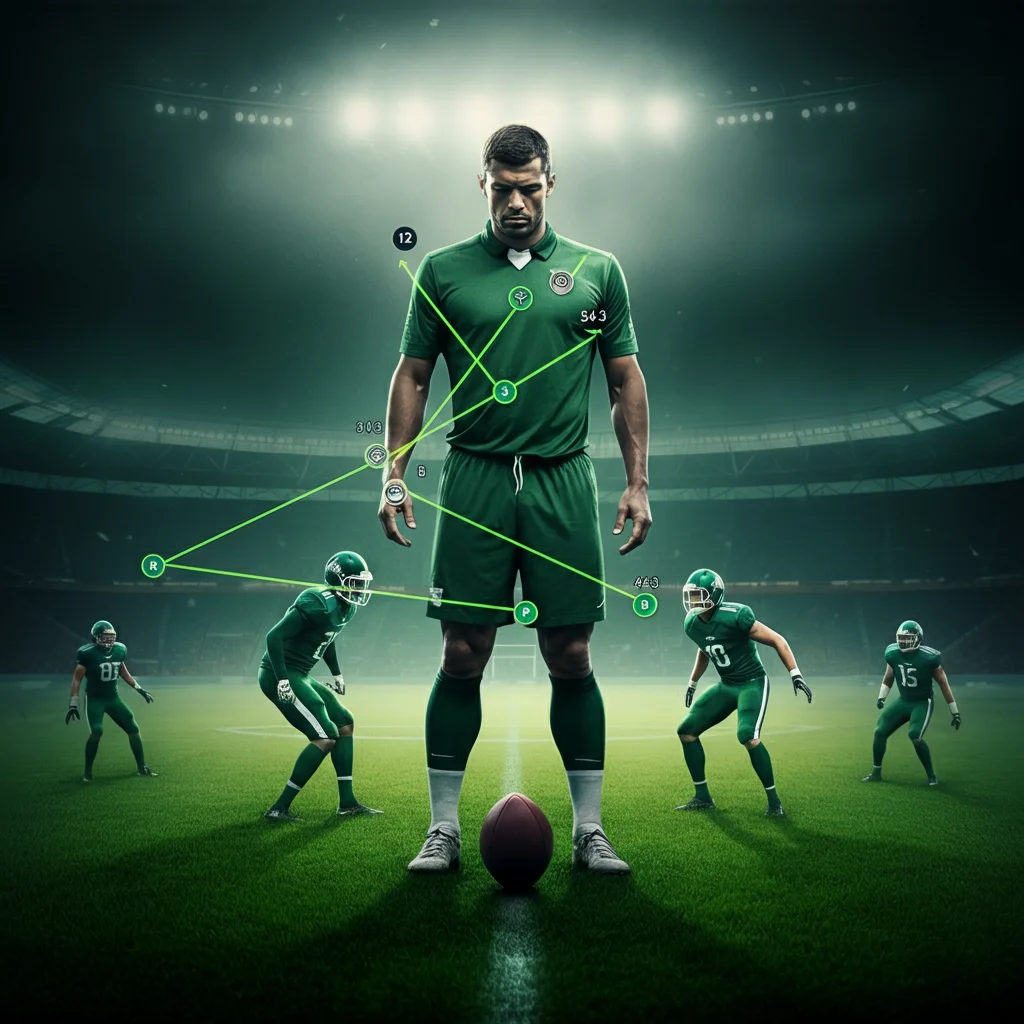The deep-lying playmaker (DLP) is one of the most fascinating roles in modern football. Positioned just ahead of the defense, this player serves as the team's metronome, dictating the rhythm of the game with composure and precision. Yet, their influence often goes unnoticed by casual observers, despite being integral to their team’s success.
This blog explores the responsibilities, attributes, and tactical nuances of a deep-lying playmaker. We’ll analyze famous examples, discuss how they function in different systems, and examine how the role has evolved in modern football. By the end, you’ll have a deep appreciation for why this position is a game-changer.
What Makes a Deep-Lying Playmaker?
A deep-lying playmaker operates in a defensive midfield position but focuses on distributing the ball and controlling the game’s tempo rather than breaking up play like a traditional defensive midfielder. Their job is to link the defense with the attack, ensuring seamless transitions between phases of play.
Key Characteristics:
Positioning: A DLP often sits just ahead of the defensive line to receive the ball under pressure.
Distribution: Their ability to deliver short and long-range passes to exploit spaces is crucial.
Game Intelligence: They must read the game impeccably, anticipating both teammates' movements and opponents' strategies.
Unlike more advanced playmakers, DLPs influence the game from deeper positions, making them key to a team’s build-up play. They require exceptional skill, patience, and football IQ.
Key Attributes of a Deep-Lying Playmaker
To excel as a DLP, certain attributes are non-negotiable. Let's break down what sets these players apart.
Vision
A DLP’s ability to see openings and passes that others don’t is their defining trait. Their success lies in recognizing how to unpick defensive setups with subtle but incisive balls. Whether it’s threading a through ball across a crowded midfield or switching play to isolate a winger, vision is vital.
Example: Andrea Pirlo was a master at this. His famous passes often bypassed entire midfields, leaving defenses scrambling to reorganize.
Passing Range
A successful deep-lying playmaker must master every type of pass—from a delicate lob to a driven diagonal switch. Their passing range allows them to adapt to various in-game scenarios, whether progressing slowly against a compact defense or launching a quick counterattack.
Example: Sergio Busquets thrives in tight spaces, effortlessly playing short, safe passes to retain possession while also capable of delivering diagonal switches.
Composure Under Pressure
Opponents often press DLPs aggressively since they are the engine of the build-up play. Great DLPs have the composure to evade pressure with a well-timed turn or calm pass. Their ability to make decisions under immense stress is what helps their teams maintain balance.
Example: Jorginho's calmness on the ball, particularly under pressure, ensures his teams stay composed even in the tensest of matches.
Famous Examples of Deep-Lying Playmakers
No discussion would be complete without recognizing the legends who have perfected this role.
Andrea Pirlo: The archetypal DLP, Pirlo brought elegance and precision to the position. With his unmatched creativity, Pirlo dominated games for Juventus and Italy, earning two Champions League titles and a World Cup.
Sergio Busquets: A vital cog in Barcelona and Spain's possession-heavy systems, Busquets excels at short passing and retaining the ball in tight spaces. His tactical awareness and defensive contributions make him a complete DLP.
Jorginho: A modern-day regista who has shone for Chelsea and Italy, Jorginho thrives in controlling tempo and linking all areas of the pitch with his intelligent positioning and technique.
Tactical Impact of a Deep-Lying Playmaker
The influence of a DLP on a team’s tactical setup is colossal. A capable DLP doesn’t just connect teammates with pinpoint passes; they also dictate the pace of play, provide defensive cover, and ensure cohesion across all lines.
1. Dictating Tempo
By deciding when to speed up or slow down play, the DLP controls the game’s rhythm. Teams with skilled DLPs dominate possession, forcing opponents to chase the ball and wear themselves out.
2. Defensive Duties
Although not primarily defensive destroyers, DLPs can be vital in breaking up counterattacks when positioned well. Their deeper positioning also helps shield the backline.
3. Linking Lines
A DLP's ability to find fullbacks, wingers, and attacking midfielders efficiently helps bypass opposition pressing traps. They are the glue holding the entire team’s structure together.
The Role in Different Systems
The DLP’s role and responsibility vary depending on the system a team uses. Here’s how they function in some common formations:
4-3-3 Formation
Here, the DLP sits as the single pivot in midfield. They often work alongside two box-to-box midfielders who cover more ground, enabling the DLP to focus on dictating play.
Example: Busquets thrives in this formation at Barcelona, allowing creative midfielders like Xavi and Iniesta to operate freely.
4-2-3-1 Formation
The DLP plays as part of a double pivot, sharing defensive responsibilities with another midfielder. This setup provides them more protection and time to pick their passes.
Example: Jorginho in this role for Chelsea ensures stability while supporting attacking transitions.
3-5-2 Formation
A three-man defense allows the DLP to drop deeper to receive the ball while wingbacks stretch the width of the pitch. This system gives the DLP more time to execute long, diagonal switches.
Example: Pirlo often played this role for Juventus, making the most of the space created by overlapping wingbacks.
The Modern Evolution of the Deep-Lying Playmaker
The DLP has evolved over the years to take on hybrid roles that blend their traditional skills with additional attributes.
Regista: An Italian term meaning “director,” the regista operates as a pure playmaker and game controller (e.g., Pirlo).
Metronome: This player moves the ball with short, quick passes to maintain rhythm and control (e.g., Busquets).
Deep-Lying Box-to-Box: These players combine creative duties with aggressive defensive contributions, influenced by the rise of pressing systems.
When Does a Deep-Lying Playmaker Work Best?
While a DLP’s technical ability is central to their success, their effectiveness also depends on the team's style and the opposition’s structure.
Ideal Scenario: A team that prioritizes possession and build-up play benefits most from a DLP. Against defensive setups, the DLP unlocks rigid structures with long-range passing.
Challenging Scenario: Against high-pressing teams, DLPs can struggle without mobile teammates who create passing angles and relieve pressure.
Why Deep-Lying Playmakers Are Indispensable
The deep-lying playmaker is more than just a player; they are the brain of the team. They dictate tempo, link defense to attack, and provide stability in possession. From the artistry of Pirlo to the flawless efficiency of Busquets, this role has shaped some of the greatest teams in football history.
If you're fascinated by the tactics behind the beautiful game, understanding the nuances of a deep-lying playmaker will give you a deeper appreciation for its complexities. Whether you’re a player, coach, or avid fan, this role demonstrates the captivating depth of football.



